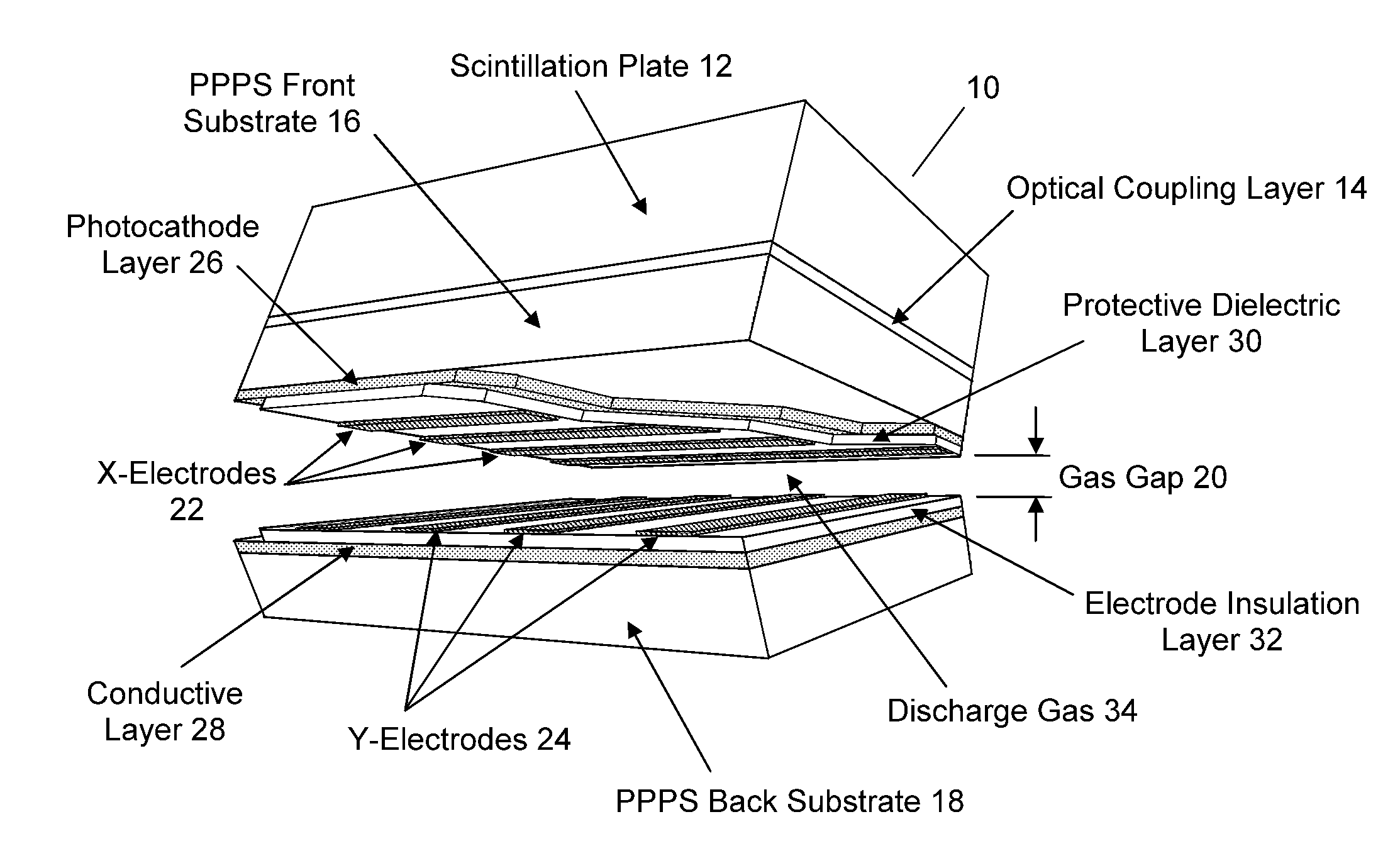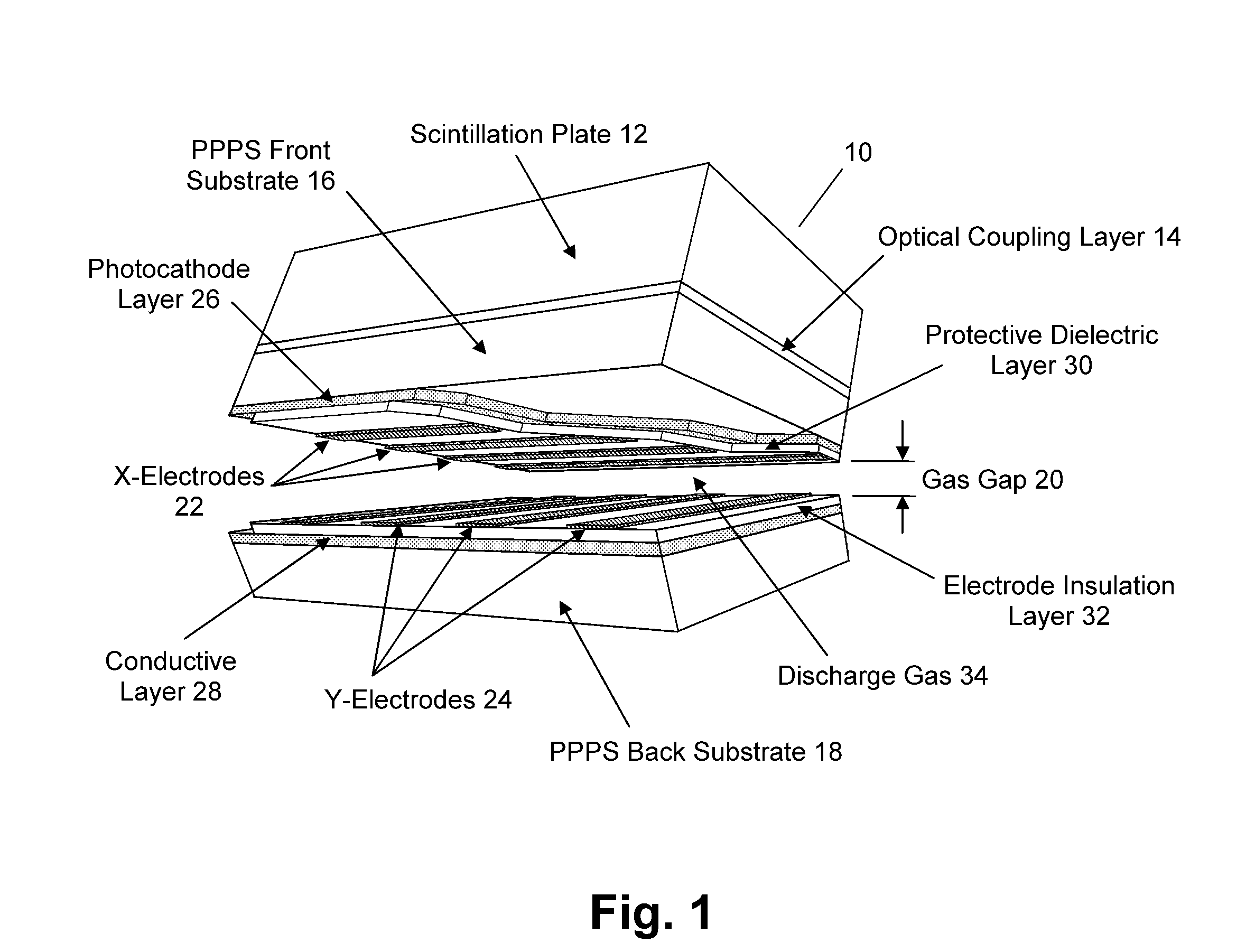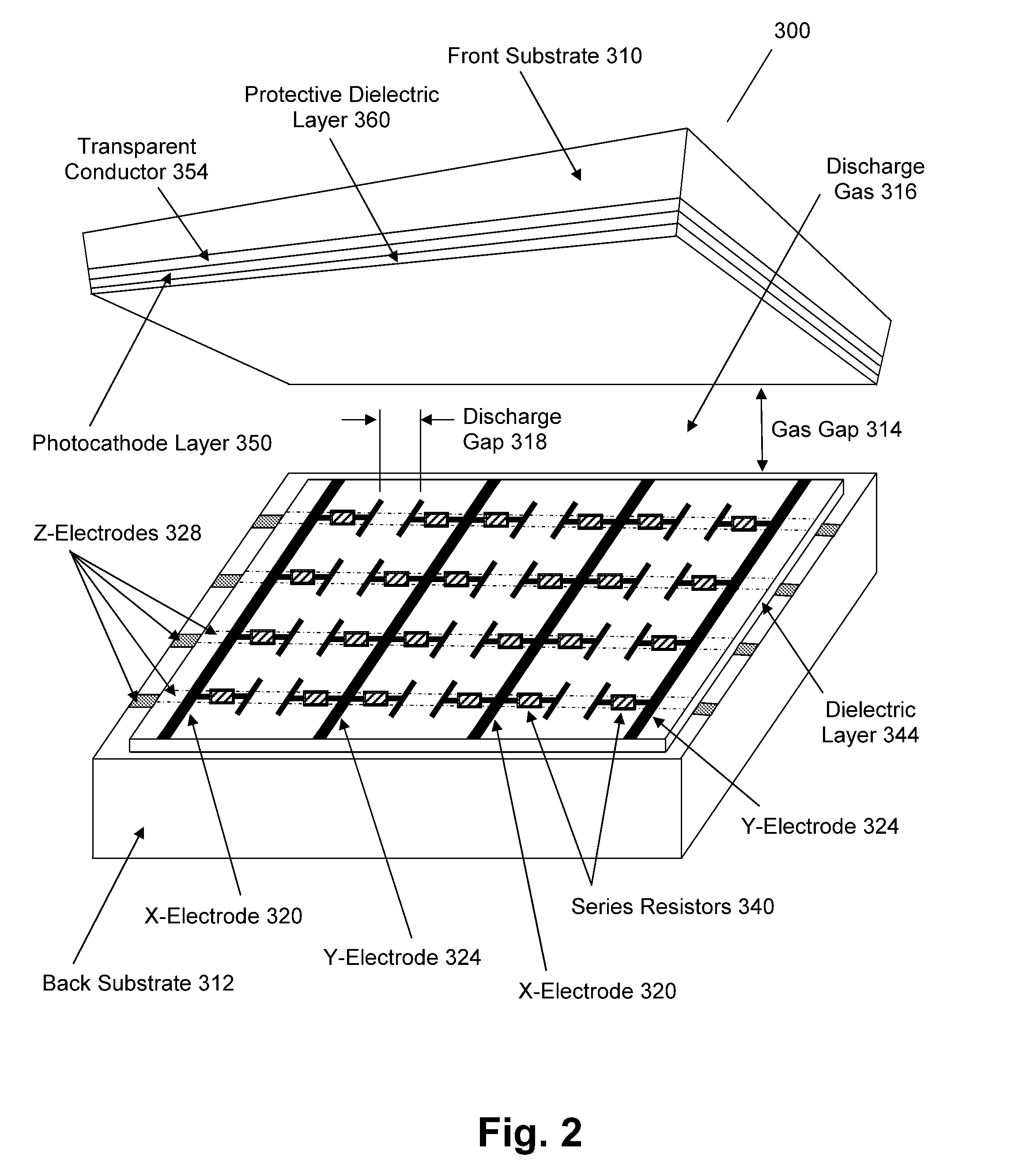Plasma Panel Based Radiation Detector
a radiation detector and plasma panel technology, applied in the field of radiation detection, can solve the problems of limiting the use of radiation detectors to gains, and limiting the use of radiation detectors in large parts
- Summary
- Abstract
- Description
- Claims
- Application Information
AI Technical Summary
Problems solved by technology
Method used
Image
Examples
Embodiment Construction
[0019]One embodiment of the present invention is a device that enhances the capability and / or reduces the cost for detecting radiation for ionizing particles and photons, as well as non-ionizing photons such as “optical” photons. Embodiments do not record the magnitude of a given cell gas discharge as do most prior art detectors that operate in the linear region as proportional devices, but instead operates in the non-linear region with extremely high gain and is able to employ Geiger-Mueller type counting methods in assigning essentially the same value to each event regardless of the cell discharge magnitude. Embodiments of the present invention are therefore inherently digital in nature and can be highly pixelated, can utilize low cost materials and fabrication processes, and are extremely rugged and capable of operating under challenging ambient conditions including high magnetic fields. One embodiment comprises a plasma panel device designed to operate as a high gain, highly pix...
PUM
 Login to View More
Login to View More Abstract
Description
Claims
Application Information
 Login to View More
Login to View More - R&D
- Intellectual Property
- Life Sciences
- Materials
- Tech Scout
- Unparalleled Data Quality
- Higher Quality Content
- 60% Fewer Hallucinations
Browse by: Latest US Patents, China's latest patents, Technical Efficacy Thesaurus, Application Domain, Technology Topic, Popular Technical Reports.
© 2025 PatSnap. All rights reserved.Legal|Privacy policy|Modern Slavery Act Transparency Statement|Sitemap|About US| Contact US: help@patsnap.com



